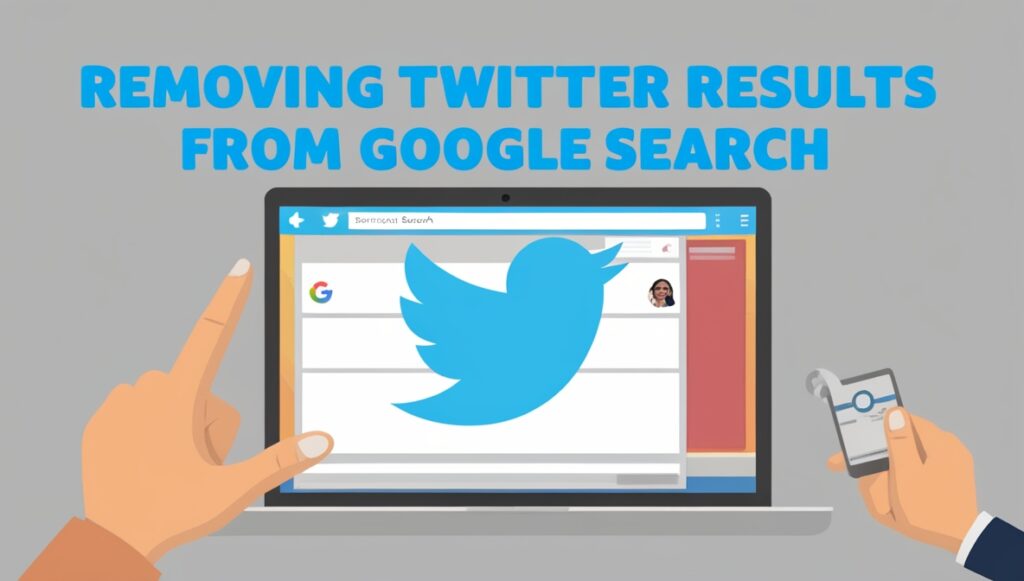
In our increasingly digital world, managing your online presence has never been more critical. One area of concern for many users is the way social media content—particularly from platforms like Twitter—can appear in Google search results. Whether it’s an old tweet that no longer reflects your views or a casual comment you’d prefer to keep private, knowing how to remove unwanted Twitter results from Google search can help protect your reputation and privacy. This article will walk you through the strategies and steps needed to effectively remove Twitter results from Google searches.
Why You Might Want to Remove Twitter Results
There are a variety of reasons you might want to remove Twitter results from Google:
- Privacy Concerns: Tweets, retweets, and likes can expose your opinions and personal details that you may want to keep private. In some instances, former posts may not represent your current thoughts or life situation.
- Professional Image: For businesses and professionals, an unfiltered Twitter history can affect job opportunities and business partnerships. Maintaining a polished online persona often requires the removal of older, unprofessional posts.
- Negative Associations: If your account has been involved in controversial discussions or if you’ve participated in public debates that may appear harmful when viewed later, cleaning up these results can mitigate negative impressions.
Steps to Request Content Removal from Google
If you have decided to take action against unsavory Twitter results, there are specific steps you can follow to request the removal from Google. Here’s a concise guide tailored to streamline the process:
Steps to request content removal on Google:
- Visit Google’s content removal page.
- Submit the link to your Twitter profile or tweets that have already been indexed.
- Follow the steps to request the content removal.
Step 1: Visit Google’s Content Removal Page
Your first move should be to access Google’s content removal page. This area of Google’s website outlines the various types of content eligible for removal and provides the necessary forms and guidelines for submitting requests. Understanding the criteria for removal is crucial, as not all Twitter content will necessarily be eligible.
Step 2: Submit the Link to Your Twitter Profile or Tweets
Next, you will need to provide the specific URLs of the Twitter content you wish to remove. Carefully navigate to the tweets or your profile in question and copy their links. Accurate submission is vital to ensure your request is processed efficiently. Be detailed in your submission and provide any context that might support your decision for removal.
Step 3: Follow the Steps to Request the Content Removal
Finally, proceed to fill out and submit any forms as directed. Google may need to verify your identity to process your content removal request adequately. Ensure you comply with their guidelines and provide any necessary documentation that may support your case.
Understanding Google and Twitter’s Relationship
Search Engine Indexing

It’s essential to understand how content from Twitter gets indexed by Google. When users post content on Twitter, it becomes publicly accessible, and Google’s crawlers may index these tweets, allowing them to appear in search results. This makes it particularly vital for users who wish to retain control over their digital footprints to be proactive.
The Role of Privacy Settings
Twitter allows users various privacy options. Setting your account to private is an effective way to limit who can view your tweets and potentially lessen the exposure of your content. However, simply setting your profile to private won’t remove previously indexed content from Google’s search results. Therefore, proactive removal via Google’s content removal processes is still necessary.
Additional Methods to Manage Your Online Reputation
While requesting removal is one approach, there are other strategies you can employ to manage your online reputation and decrease the likelihood of unwanted Twitter links appearing in search results.
1. Regularly Audit Your Twitter Account
Performing regular audits of your Twitter history can help mitigate the risk of unwanted content resurfacing. Evaluate older tweets and consider deleting those that no longer represent your beliefs or professional standing.
2. Utilize Google Alerts
Set up Google Alerts for your name and other relevant identifiers. This tool will notify you whenever new content appears online containing your specified keywords, allowing you to stay vigilant about what is being posted or mentioned about you.
3. Engage in Positive Online Behavior
Regularly contributing positively on platforms like Twitter—be it through thoughtful commentaries, articles, or community engagement—can create a buffer against negative associations. The more positive content you generate, the further it will push down undesirable results in search engines.
4. Enhance Your Online Presence
Creating and curating high-quality, valuable content through a blog or professional website can help you manage your digital footprint. This strategy provides an opportunity to present a well-rounded, professional image that supersedes any negative results.
Considerations and Limitations
Legal Implications
It is important to consider the legal implications surrounding content removal. While you have the right to request the removal of your content from Google, understand that this process does not guarantee removal from all areas of the internet, nor does it prevent other users from sharing your content further. If malicious content poses a serious issue, contacting a legal professional may be warranted for more comprehensive action.
Limited Control Over Social Media Platforms
While you can take steps to manage and control your Twitter presence and request removal from Google, be aware that social media platforms have their own policies and controls. Sometimes the process can also take time, as Google has to process and approve your request.
The Importance of SEO in Your Digital Strategy
In the fast-paced world of digital marketing, staying informed about search engine optimization (SEO) is essential. Understanding how SEO algorithms work can help you manage your online presence more effectively. At Dust Digital Marketing Ltd., we provide expert SEO services designed to amplify your presence across all digital platforms, including Google and social media networks like Twitter.
Why Choose Us for Your SEO Needs?
- Experience: With over 10 years of experience in digital marketing, our team understands the nuances of SEO in various markets, including Hong Kong.
- Customized Strategies: We create tailored strategies based on your specific objectives, whether it’s brand awareness, reputation management, or lead generation.
- Proven Results: Our track record of success demonstrates the effectiveness of our SEO techniques in improving visibility and driving organic traffic.
- Ongoing Support: We provide continuous monitoring and support to ensure your online image remains positive.
Conclusion

Removing Twitter results from Google search is essential in today’s digital landscape for privacy, professionalism, and peace of mind. By following the steps outlined in this guide and adopting a proactive approach to managing your online presence, you can take control of your digital identity effectively. Whether you are an individual looking to protect your privacy or a business aiming to maintain a professional image, understanding how to navigate content removal processes is invaluable.
For assistance with SEO and managing your digital footprint, reach out to Dust Digital Marketing Ltd. at dusthk.com. Our team is here to help you navigate your online presence and ensure your reputation shines through the noise.

